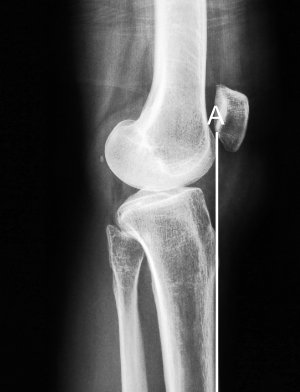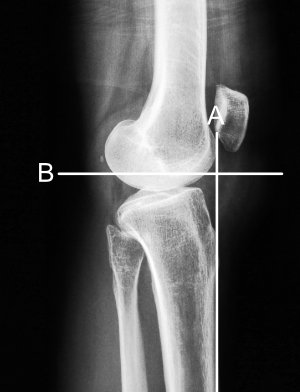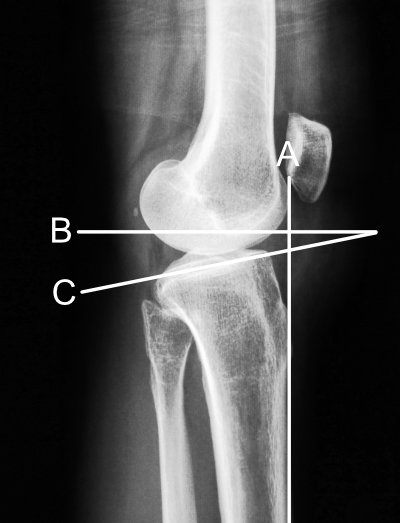Posterior tibial slope exists when the top of the tibia slopes downward towards the back of the knee. A few degrees of posterior slope is normal.
 Page updated January 2024 by Dr Sheila Strover (Clinical Editor)
Page updated January 2024 by Dr Sheila Strover (Clinical Editor)



Relevance of posterior tibial slope
The amount of tibial slope has a bearing on knee stability, and in particular the stability of the anterior cruciate ligament (ACL). An abnormal degree of slope may make the ACL more prone to injury.
Measurement of posterior tibial slope
To measure the angle of tibial slope, a line is drawn on an X-ray along the front of the tibia (anterior tibial cortex line) (A). Then a line is drawn perpendicular to the anterior tibial cortex line (B). Finally a line is drawn along the top of the tibial plateau (C), and the angle of the posterior tibial slope is the angle formed by B and C.
Correcting tibial slope for ACL reconstruction
If the surgeon is concerned that an abnormal tibial slope might prejudice the outcome of an ACL (anterior cruciate ligament) reconstruction, then a high tibial osteotomy might be performed to correct the slope before the cruciate injury is dealt with.
Quick links
Peer-reviewed papers
-
Quote:
"Higher tibial slopes in injured soccer players compared to the uninjured players may indicate a relationship between the tibial slope and ACL injury risk....On players who display higher tibial slopes, additional exercises targeting enhancement of neuromuscular stability should be advised."
Citation: Senişik S, Ozgürbüz C, Ergün M, Yüksel O, Taskiran E, Işlegen C, Ertat A. Posterior tibial slope as a risk factor for anterior cruciate ligament rupture in soccer players. J Sports Sci Med. 2011 Dec 1;10(4):763-7. PMID: 24149571; PMCID: PMC3761495.
Relevant material -
Peer-reviewed paper -
- 2018 - Underappreciated Factors to Consider in Revision Anterior Cruciate Ligament Reconstruction - Authors: Southam BR et al. - interpreted for you by Dr Sheila Strover (Clinical Editor)